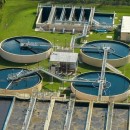
In recent times, society has been introduced to a new term: the modern market. The rapid development of technology and information has indeed divided the market into two: traditional and modern markets.
A market is defined as a place where buying and selling activities take place. Currently, markets are divided into two types, namely traditional and modern markets. In general, the products sold are not much different. However, the modern concept market comes as a result of people's lifestyles, which are dynamic and constantly evolving.
People enjoy this new form of market because it is able to provide a place and shopping experience that is considered more comfortable. In Indonesia, the history of this type of market began with the establishment of a department store called Sarinah in 1963. Sarinah was the first modern market in Indonesia, built on Jalan M.H. Thamrin. It accommodated people's businesses, especially in the retail sector.
Since then, markets with modern concepts have continued to grow. This type of market is called a fixed price market, where prices are predetermined and non-negotiable.
The traditional and modern markets differ in their approach towards bargaining. While products sold in both types of markets may be the same, bargaining over prices is not allowed in modern markets. The two types of markets also differ in terms of price and product quality. Modern markets offer a variety of products with fixed prices and proven quality. They are usually located in urban or suburban areas with clean, comfortable, and safe environmental conditions.
Modern markets offer numerous advantages to the public. They provide a cleaner and more comfortable shopping experience, create more job opportunities, contribute to the country's gross domestic income, and offer products with guaranteed quality. However, modern markets also have some disadvantages. Their presence can lead to several advantages, such as providing a cleaner and more convenient place to shop.
Sarinah, built on Jalan M.H. Thamrin, Jakarta, is an example of the first modern market in Indonesia. Since then, this type of market has continued to grow. Today, you can easily find examples of modern markets around you. In general, 10 types of modern markets are commonly found throughout the country. These include minimarkets, convenience stores, specialty stores, factory outlets, distribution stores, supermarkets, wholesale warehouses, hypermarkets, and malls and trading centers. Popular examples of such markets are Alfamart and Indomaret.
In an age of modernization, modern markets are considered to have great prospects in business. Not just in urban areas, but such markets have begun to bring their business closer in rural areas. With the help of modernization, grocery stores in rural areas are becoming modern markets.
Opening a grocery market can be a promising business opportunity for home-based businesses, especially in rural areas where people often use part of their house to operate a small shop. While traditional markets still outnumber modern ones, there is immense potential for modern concept markets for entrepreneurs. As humans continue to evolve and change, modern concept markets will also continue to grow. You can start by preparing land as a place to open a market.



